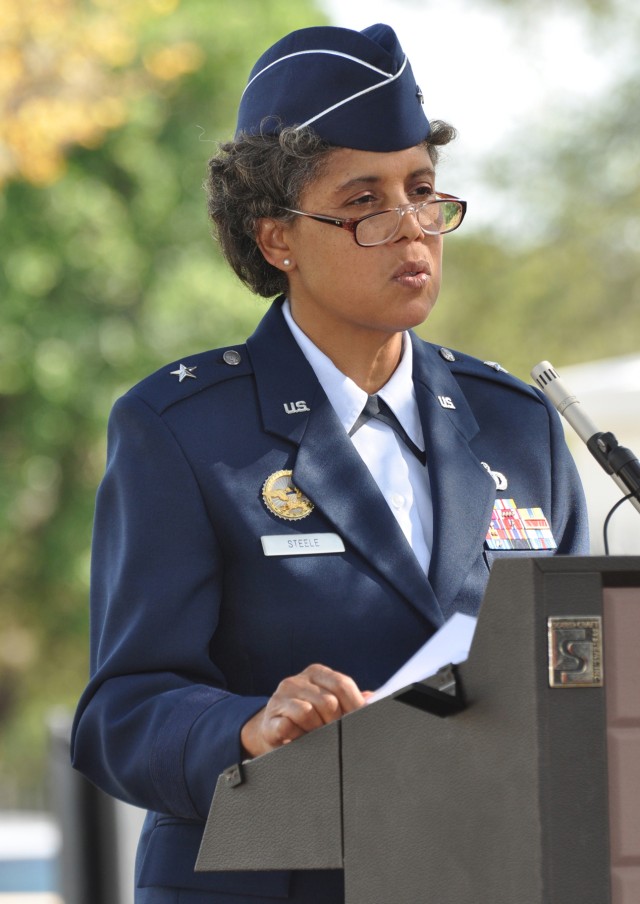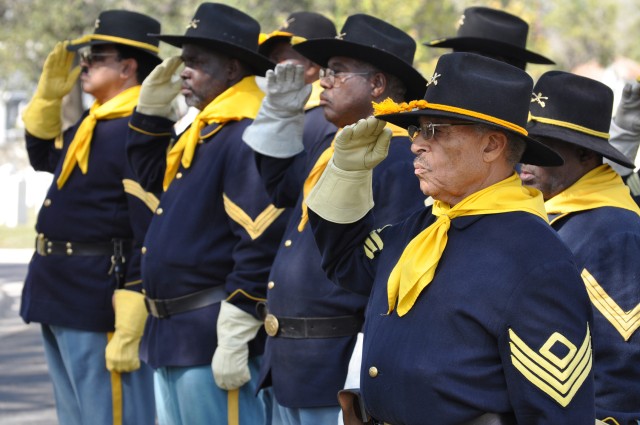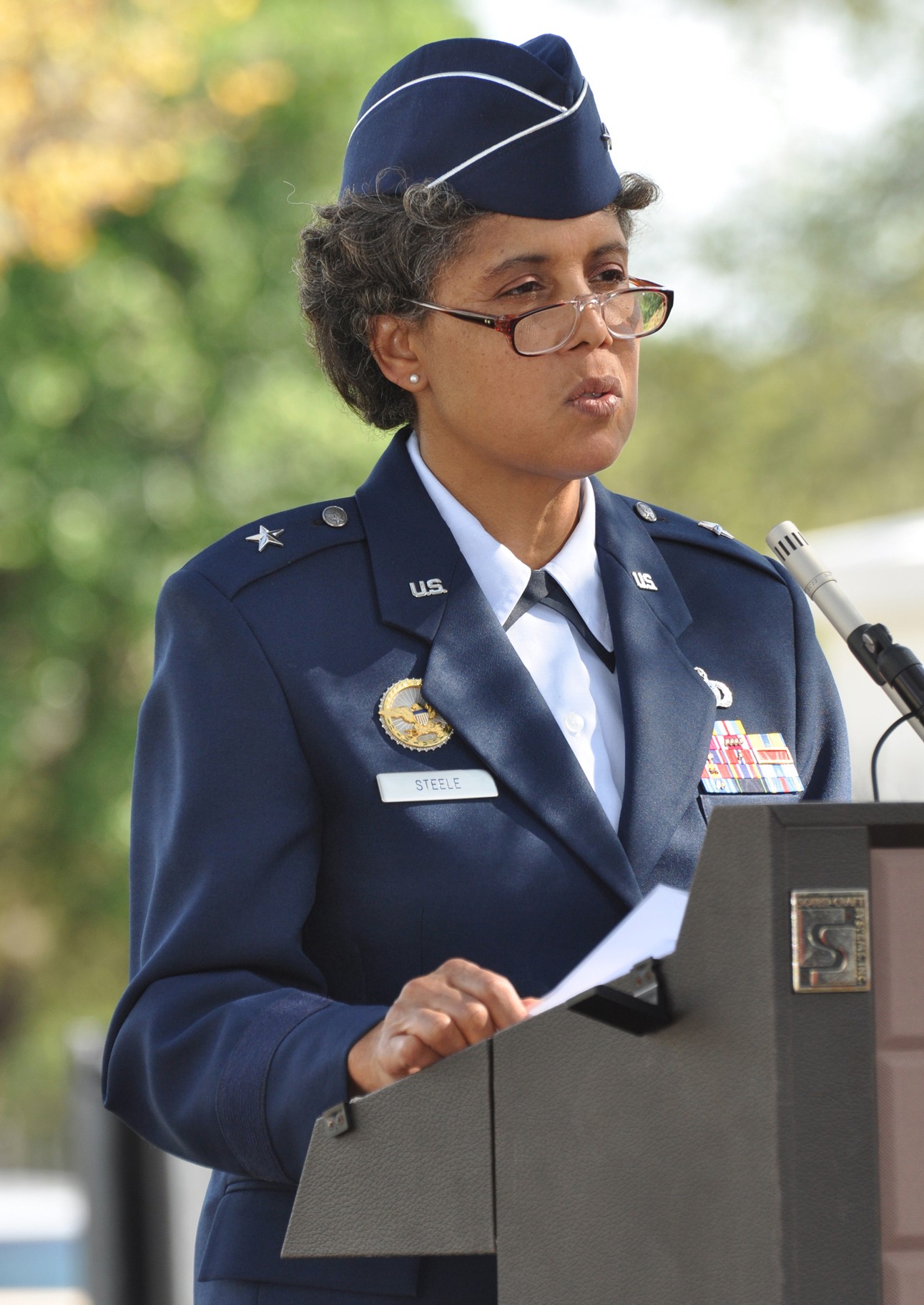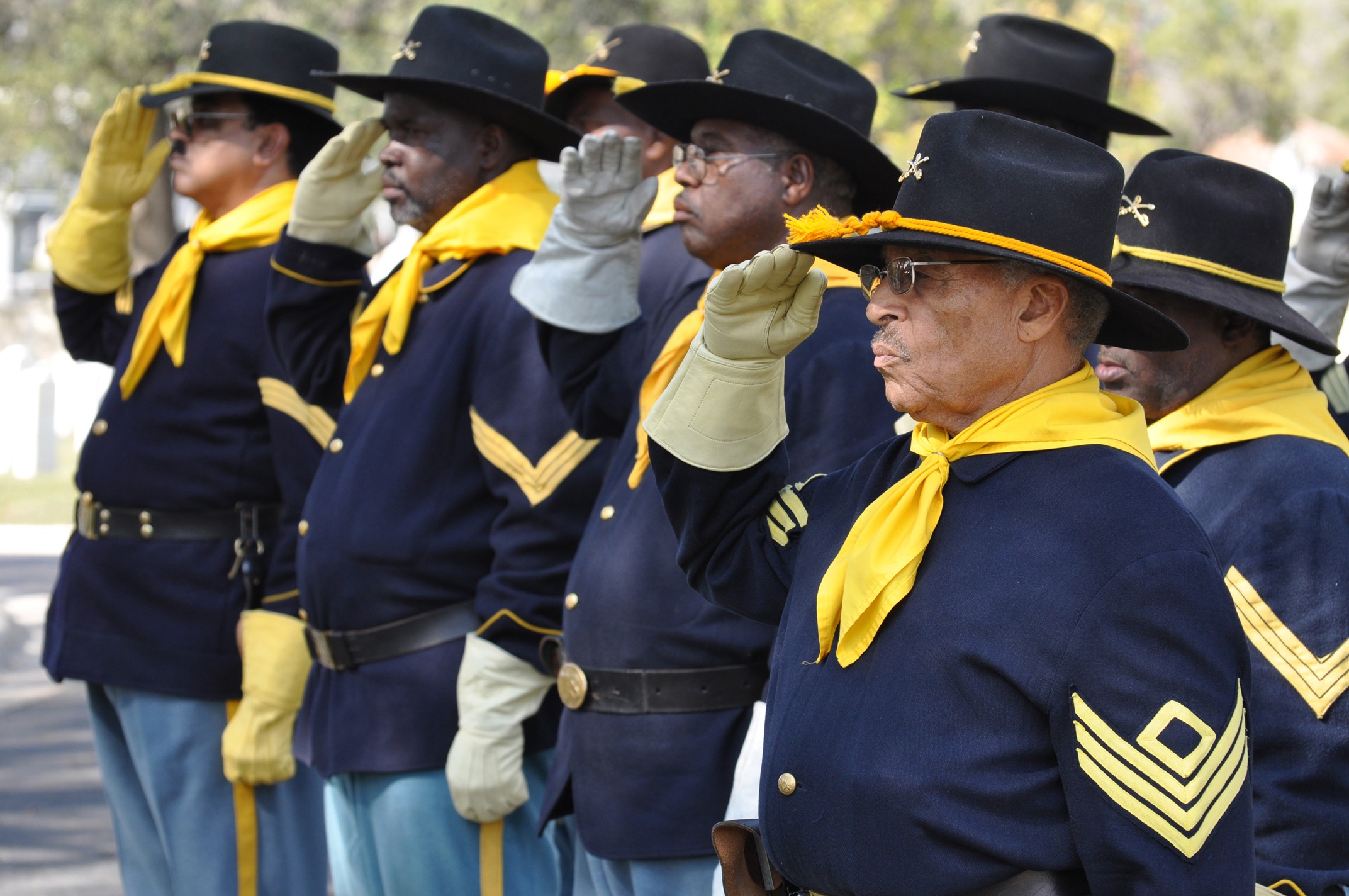FORT SAM HOUSTON, Texas -- Members of the Bexar County Buffalo Soldiers Association celebrated the achievements of their namesakes at the San Antonio National Cemetery Veterans Day, Nov. 11 in their vintage blue and yellow uniforms.
The gathering has been an annual event for the last ten years at the National Cemetery honoring the 281 Buffalo Soldiers interred there.
The original site, part of San Antonio's burial ground, was donated to the U.S. government by the city in 1867. Although the original deed was misplaced and the transfer never recorded, a new deed was executed in 1871 of approximately 1.89 acres.
According to cemetery records, the first interments were the remains of Union Soldiers removed from the city cemetery and outlying areas. Subsequent burials included unknown Soldiers who had died on the western frontier, interred under a monument inscribed "To the Unknown Dead."
The San Antonio National Cemetery was officially listed in the National Register of Historic Places in 2000. Brig. Gen. John Bullis, for whom Camp Bullis was named, is buried there.
Though small in number, the contributions of the Buffalo Soldiers were enormous along the western frontier just after the Civil War. Created by Congress in July, 1866, Buffalo Soldiers were organized into the 9th and 10th Cavalry and 24th and 25th Infantry and were part of the regular Army.
Members were veterans from the Civil war and freed slaves who wished to serve the country.
The Buffalo Soldiers were initially sent to campaign against the Comanche, Kiowa, Cheyenne and other Native tribes in Texas, Kan., western Okla. and Colo. territories, earning their moniker and respect from the Native peoples because of their appearance and fierce fighting spirit.
Buffalo Soldiers wore buffalo hide to protect against the harsh winters in the areas they were fighting and, because of their tightly curled hair, reminded Native Americans of the bison, hence their name. The nickname stuck and the Buffalo Soldiers adopted the bison as the design for their crest and the motto, "Ready and Forward" symbolizing their courage.
During the Indian Wars, together with the Seminole-Negro Indian Scouts, Buffalo Soldiers were instrumental in defeating notorious Apache leaders Victorio, Geronimo and Nana.
The 9th and 10th Cavalry Regiments united to chase Victorio into Mexico in 1880 where he was killed by the Mexican Cavalry. Buffalo Soldiers fought Nana continuously until he was captured in a surprise attack and later escaped. They pursued Geronimo until he surrendered with Victorio in 1886 to Gen. Nelson Miles.
While en route to Fla., Geronimo was temporarily housed at the Quadrangle in Fort Sam Houston.
When not fighting, Buffalo Soldiers guarded settlers and frontier posts, stagecoaches and railroads, built forts and telegraph lines; and located supplies and water for survival.
As the western frontier settled, Buffalo Soldiers continued to be involved. In 1903 and 1904 the 9th Cavalry built or improved trails and roads and constructed an arboretum, while also protecting the country's national parks from poachers, timber thieves and forest fires.
During the Veterans Day ceremony the list of fallen Bexar County Association Buffalo Soldiers was read and military honors were rendered, and "Taps" was played.
Keynote speaker, retired Brig. Gen. Toreaser Steele, discussed the value of military service and the Buffalo Soldiers to the community and to this country.
"The service of those in uniform is and always has been a national treasure because it is an investment. It is investment in people, our nation and the precious freedoms we enjoy. That is why the Buffalo Soldiers, veteran before and after them have been willing to serve and serve well this wonderful country that has not always been wonderful to them.
Steele stressed that looking beyond prejudice to something greater for oneself, Families and the nation is key to success.
The Bexar County Buffalo Soldiers also include the Seminole and Indian Scouts into their group and strive toward authenticity down to the uniform boots.
Richard Steen said he is proud of his Buffalo Soldier's uniform. "This uniform is the uniform the U.S. Army wore in 1872. This uniform was never decommissioned and is still proper dress for special occasions. It shows the continuity of service," he said noting that today's Army dress uniforms (Class A) look quite similar. "The rank insignia has not changed much and these are the actual cavalry boots they wore."
Steen also said the Bexar County Buffalo Soldiers strive to educate the community about the history of the Buffalo Soldiers providing speakers for schools, youth groups, civic organizations and churches. It's working he said.
"We don't just wear the uniform. We are role models." Earlier in the day, a youth approached Steen, attracted to his Buffalo Soldier's uniform. Steen brought the young man to the Soldiers attending the ceremony to discuss his future in military service.








Social Sharing